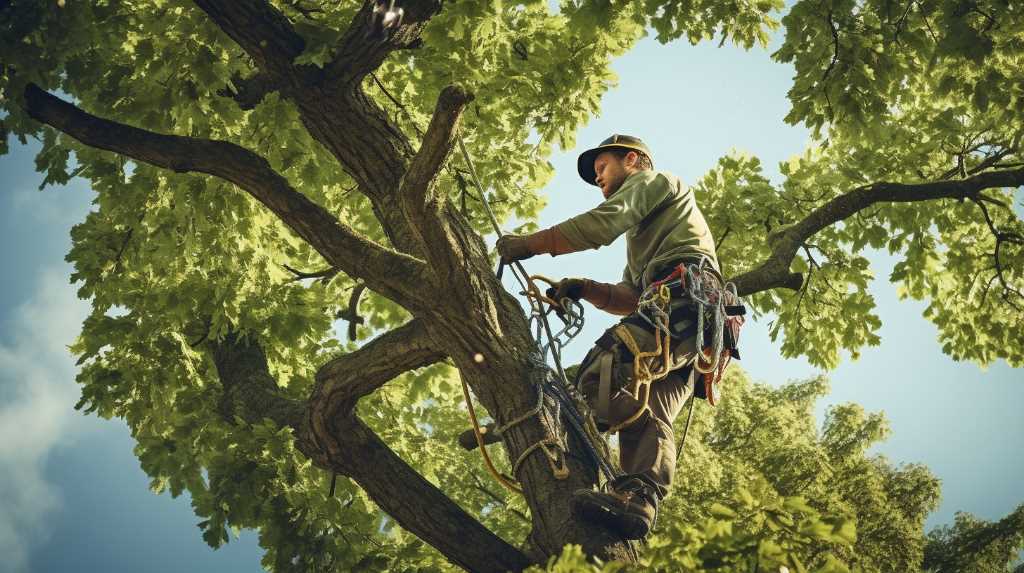Safety and Regulations
Guide to Seasonal Tree Pruning for Robust Growth


As an expert arborist, I guide you through the art of seasonal tree pruning for robust growth.
Picture this: a lush garden, filled with vibrant trees swaying in the breeze, inviting you to belong to nature’s embrace.
With my expertise, I’ll show you winter techniques, spring tips, summer care guidelines, and fall strategies to ensure your trees thrive year-round.
Together, let’s cultivate a garden that not only beautifies our surroundings but also nurtures our sense of belonging in the natural world.
Winter Pruning Techniques
In the winter, I prune trees using specific techniques to promote robust growth. This is a crucial time to shape the tree’s structure and stimulate its growth for the upcoming spring season.
One technique I employ is called ‘crown thinning,’ where I selectively remove certain branches to allow more sunlight and air circulation to penetrate the tree’s canopy. This helps prevent the tree from becoming too dense and encourages the growth of new, healthy branches.


Additionally, I focus on ‘deadwooding,’ which involves removing any dead or diseased branches to prevent the spread of disease and enhance the overall health of the tree.
Spring Pruning Tips
During the spring season, I regularly prune trees to maintain their health and promote robust growth. Spring pruning is an essential practice that helps shape the tree’s structure and encourages the development of new growth.
Here are some tips to consider:
- Remove dead or damaged branches to prevent disease and improve the overall appearance of the tree.
- Thin out overcrowded areas to allow better air circulation and sunlight penetration.
- Prune to shape the tree by selectively removing branches that are growing in undesirable directions.
- Consider pruning fruit trees to promote better fruit production and prevent branches from becoming overly heavy with fruit.
- Be cautious when pruning flowering trees, as some species may bloom on old wood. Prune these trees after they’ve finished flowering.
Summer Tree Care Guidelines
Throughout the summer season, I continue to provide essential care for my trees to ensure their growth and well-being. As an expert in tree care, I understand the importance of maintaining the health of my trees during the hot and dry months.
One crucial aspect of summer tree care is proper watering. Trees need deep, infrequent watering to encourage deep root growth. I make sure to water my trees deeply once or twice a week, allowing the water to penetrate the soil to a depth of at least six inches.
Additionally, I regularly inspect my trees for signs of stress or disease, such as wilting leaves or unusual discoloration. By promptly addressing any issues and providing the necessary care, I ensure that my trees thrive and continue to contribute to the beauty of my landscape.
Fall Pruning Strategies
As an expert in tree care, I continue to prioritize the health and growth of my trees by implementing effective fall pruning strategies. Fall is an ideal time to prune trees as they enter a dormant phase, allowing them to recover and prepare for the upcoming spring.


Here are some essential fall pruning strategies:
- Remove dead, damaged, or diseased branches to prevent the spread of infections.
- Thin out crowded branches to improve airflow and sunlight penetration.
- Shape the tree by selectively trimming branches to enhance its overall form and structure.
- Prune crossing or rubbing branches to prevent them from causing wounds or creating weak points.
- Reduce the height or size of the tree by pruning back long or overgrown branches.
Year-round Maintenance Practices
For optimal tree health and growth, I consistently implement year-round maintenance practices. These practices are crucial in ensuring the long-term well-being of trees, as they address various aspects of care and maintenance throughout the year.
One important year-round practice is regular inspection and monitoring of trees for any signs of disease, pest infestation, or structural issues. By identifying and addressing these problems early on, I can prevent them from causing further damage or spreading to other trees.
Additionally, I regularly provide proper nutrition to trees by fertilizing them during the appropriate seasons. This helps promote robust growth and strengthens their resistance to environmental stressors.
Furthermore, I prioritize regular watering, especially during dry periods, to ensure trees receive the necessary hydration for their overall health and vitality.


Hello there! I’m Logan Foster, the green-thumbed social media marketer behind the vibrant world of 1800TreeGuy.com. With roots firmly planted in arboriculture, I’ve branched out to help clients cultivate their dream outdoor spaces, one leafy canopy at a time. My knack for nurturing nature is more than a profession—it’s a way of life.
When I’m not talking trees and teaching the art of arboreal care, you can find me cheering on the Bulldogs—my alma mater’s pride and my forever team. My environmental studies there didn’t just teach me about ecosystems; they instilled a lifelong passion for protecting our planet.
Off the clock, I’m an adventurer at heart. Whether it’s trekking the Appalachian trails, pedaling down a mountain path, or crafting guides to share the wonders of the wild, I’m happiest with soil under my nails and the sun on my face. And let’s not forget Yoda, my pug sidekick. He may not have mastered the art of stillness, but his joyful grins are my daily dose of happiness.
I’m all about making connections—between people and the great outdoors and between my clients and their ideal landscape visions. My approach is personal; every tree has a story, and every garden reflects its caretaker.
If you want to green your scene or share in my outdoor escapades, give me a shout on Instagram or Facebook. Let’s cultivate a conversation and grow a community rooted in a love for the lush life.







